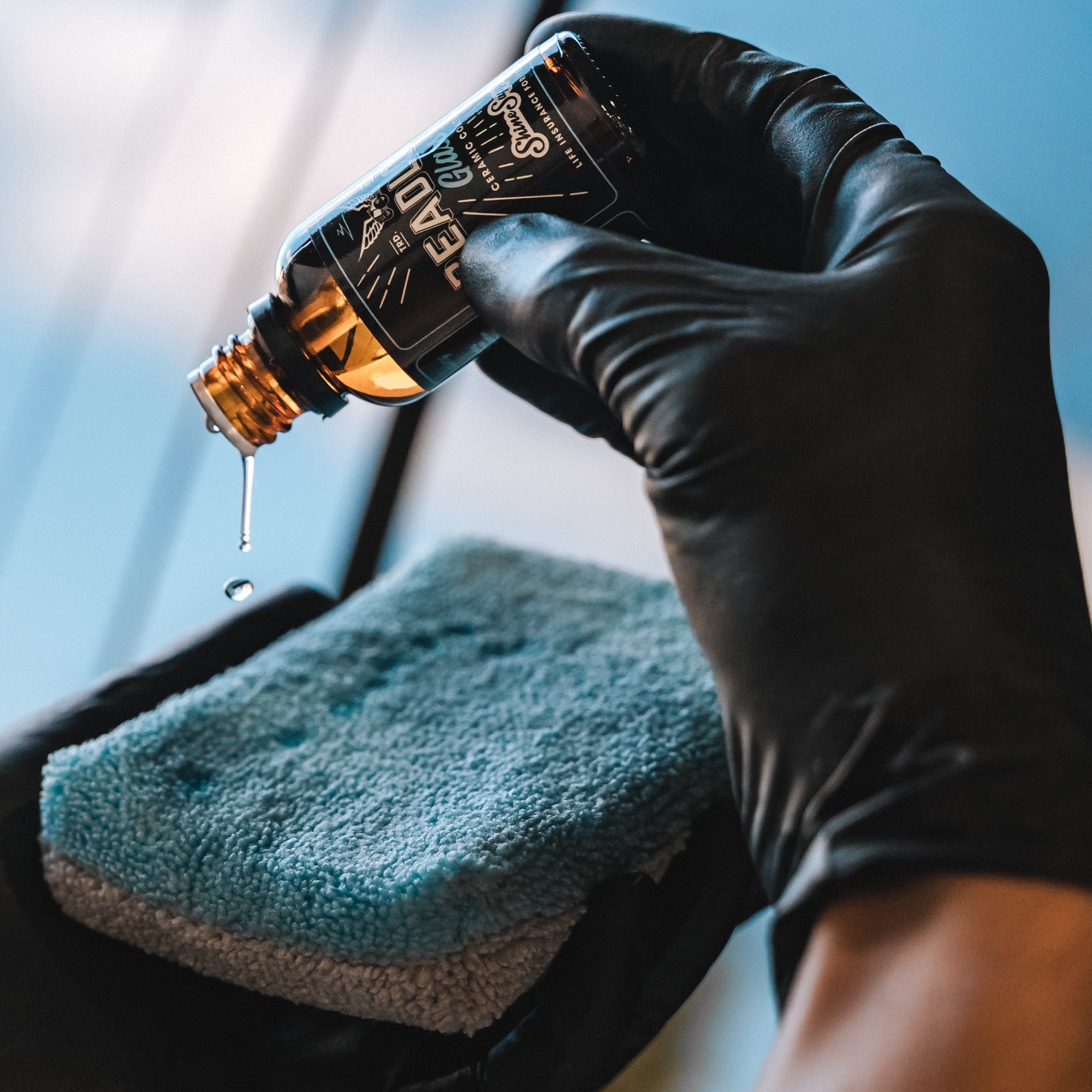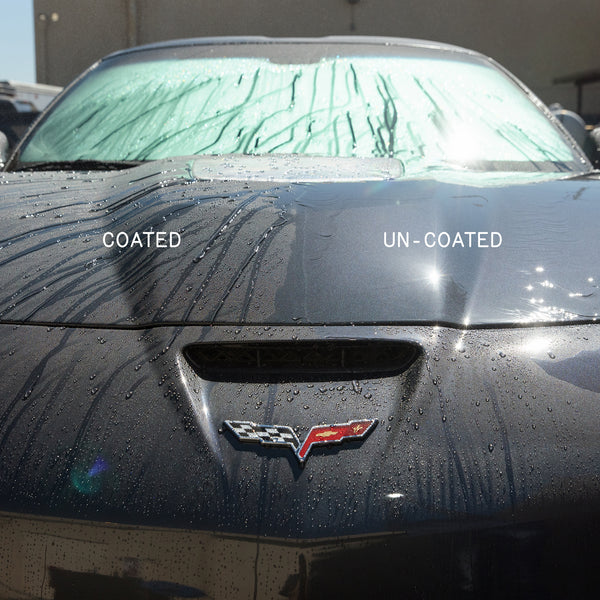Exploring the Science Behind Ceramic Finish and Its Influence On Automobile Describing
The application of ceramic coating in automobile outlining stands for a significant development in vehicle treatment, rooted in its innovative chemical buildings, primarily silica dioxide and titanium dioxide. Understanding the science behind these materials reveals not only the protective benefits they provide however likewise their function in improving a car's aesthetic durability. As we check out the ins and outs of the application procedure and the long-lasting ramifications for automobile maintenance, it ends up being clear that the option of ceramic finishing can essentially alter one's method to vehicle care. What considerations should be made before committing to this transformative solution?
What Is Ceramic Coating?
Ceramic layer is a contemporary solution that has obtained popularity in the vehicle detailing market for its capacity to offer durable security for lorry surfaces. This sophisticated safety layer is normally composed of silica dioxide (SiO2), which develops a solid bond with the vehicle's paint, producing a sturdy shield against ecological contaminants. Unlike conventional wax or sealers, ceramic coverings supply superior resistance to UV rays, chemical spots, and physical abrasions.
The application of ceramic finish involves a precise procedure, where the lorry's surface is thoroughly cleaned up and sanitized before the finish is used (Ceramic Coating). Once treated, the finish enhances the car's gloss, deepness, and quality, giving a showroom-quality finish that lasts for years. One of the vital benefits of ceramic coating is its hydrophobic buildings, which fend off water and dirt, making maintenance simpler and minimizing the regularity of cleans
The Chemistry of Ceramic Layer
A basic facet of ceramic layer exists in its chemical make-up, mostly defined by the presence of silica dioxide (SiO2) This compound is integral to the formation of a sturdy, safety layer that bonds chemically to the automobile's surface area.
In addition to SiO2, numerous ceramic coverings incorporate titanium dioxide (TiO2) and various other ingredients to improve their performance features. TiO2, as an example, adds to enhanced firmness and chemical resistance. The interaction between these substances produces an unique molecular framework that provides a high degree of defense against ecological aspects such as UV rays, acid rain, and oxidation.
In addition, the application process often includes a meticulous prep work of the surface to make sure optimal attachment of the finishing. This chemistry not just makes certain a resilient finish however additionally improves the visual appeal of the automobile. Understanding the complex chemistry behind ceramic coverings is necessary for detailing specialists who intend to provide remarkable defense and longevity for their customers' vehicles.
Benefits of Ceramic Finish
While detailing experts usually highlight the benefits of ceramic coatings, their benefits expand much beyond appearances. The primary benefit transcends protection against environmental pollutants. Ceramic finishings produce a hydrophobic surface area that pushes back dirt, crud, and water, considerably minimizing the regularity of cleans and the initiative check here called for to maintain a vehicle's appearance. This safety layer additionally guards the paint from harmful ultraviolet check it out rays, avoiding oxidation and fading in time.
Moreover, ceramic coatings boost the long life of the automobile's surface. Unlike conventional waxes or sealers, which might last a few months, ceramic coverings can endure for several years, supplying a long-term service for vehicle care. This longevity equates to cost financial savings, as proprietors are less most likely to need frequent reapplication.
In addition, ceramic finishings are immune to chemical spots and etching, which can take place from acidic materials like bird droppings or tree sap. This resistance not just preserves the lorry's appearances however also lessens potential damages - Ceramic Coating. Generally, the investment in ceramic finish supplies automobile owners a considerable return in terms of security, ease of maintenance, and durable visual allure, making it an increasingly prominent choice in the realm of auto detailing
Application Refine Explained

As soon as the surface additional reading area is properly prepared, the ceramic coating can be used. Utilizing an applicator pad, the specialist applies the finish in little areas, working in a crosshatch pattern to ensure also coverage.
As soon as cured, the ceramic finish forms a strong bond with the paint, supplying boosted protection and a glossy surface. Correct application is important to optimize the long life and efficiency of the ceramic coating.

Lasting Influence on Automobile Care
The long-term influence of ceramic finish on automobile care is significant, as it basically modifies just how owners maintain their lorries. By producing a durable, hydrophobic layer on the lorry's surface area, ceramic coverings minimize the adherence of dust, gunk, and contaminants. This property reduces the regularity of washing required, inevitably saving water and cleansing products.
Additionally, the UV security offered by ceramic finishes helps to avoid oxidation and fading of the car's paint, maintaining its visual appeal and resale worth over time - Ceramic Coating. This safety obstacle likewise lowers the probability of scratches and swirl marks, which are typical concerns in conventional paint coatings
Furthermore, ceramic coatings promote much easier upkeep, enabling proprietors to cleanse their cars with marginal initiative. The smooth surface makes it tough for impurities to bond, allowing easier elimination throughout regular cleaning.
Over time, the financial investment in ceramic covering might bring about cost savings in lorry treatment products and services. Generally, the sustaining benefits of ceramic layers not only improve the look of lorries yet also contribute to a much more effective and lasting approach to vehicle maintenance.
Final Thought
Finally, the application of ceramic layer stands for a considerable development in cars and truck describing, driven by its one-of-a-kind chemical composition of silica dioxide and titanium dioxide. This innovation not only boosts the visual charm of cars however also gives durable protection versus environmental threats and use. The lasting benefits, including minimized maintenance frequency and enhanced sturdiness, highlight the value of ceramic coverings as a vital investment for maintaining vehicle look and stability over time.
